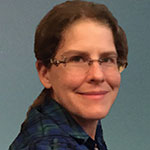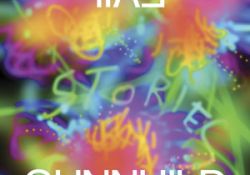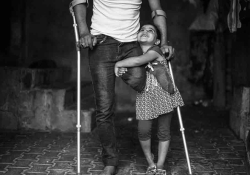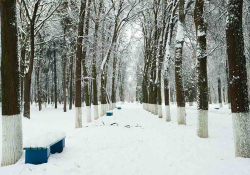Dreamwriter (Autobiography)
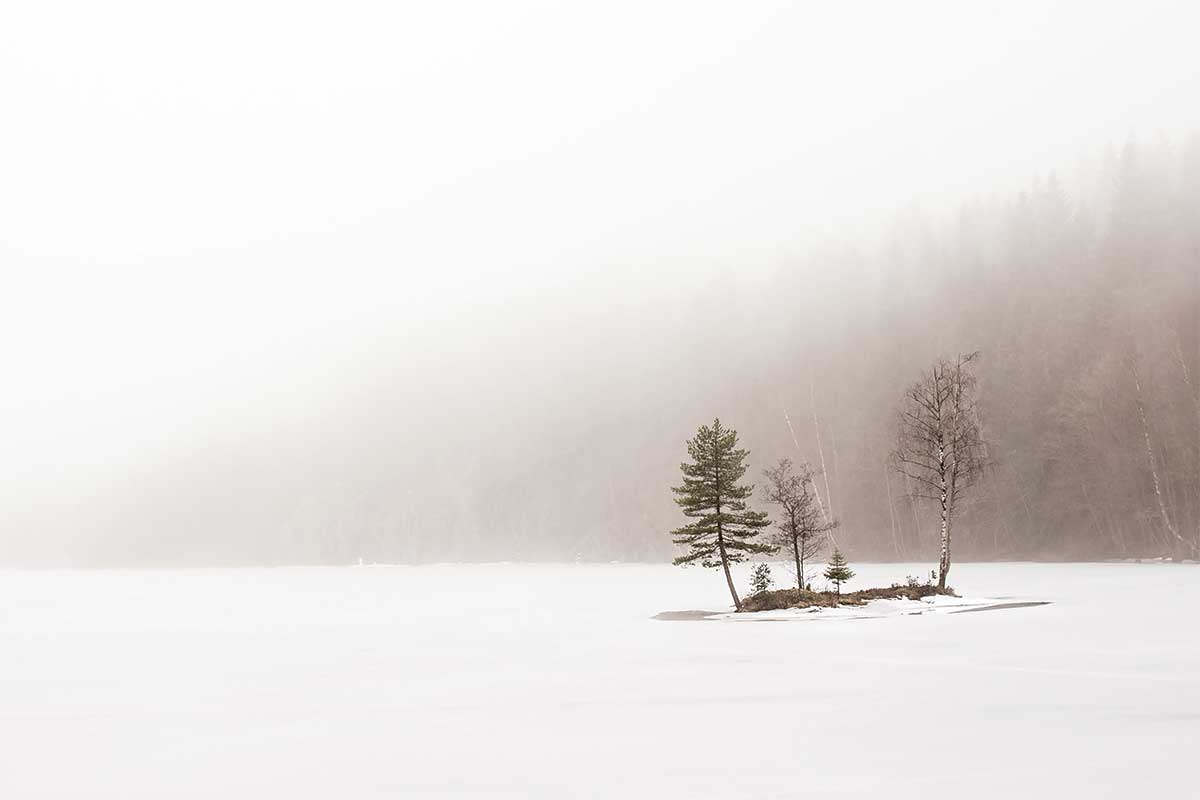
If, the woman thinks, she were an airplane that crashed and someone located the little black box, that would be the sentence they found, to hear water, but not to see it . . .
Hello, it’s morning, I’m sitting at the kitchen table and have just read two versions of “Draumkvedet” (The dream ballad), except I keep getting distracted by the feeling of looking up through a tørrfiskstativ, a fish-drying rack, set on a mountain. A tall fish-drying rack, and my perspective is from the ground, from the dry, smooth rock face, and through the slats in the rack streams the thin sunlight, and this is what distracts me, the play of light and shadow between the drying fish. My grandmother worked with fish when she was thirteen, and she lived alone on an island with twenty fishermen, she slept in a bunk bed surrounded by twenty snoring men, no one could be more different than my grandmother and myself, my grandmother could beat anyone at arm wrestling, could walk miles carrying a heavy milk pail, when she was a kid she used to beg to kill the rats dozing on the sunny barn steps, she told me how she’d beat them against the bathtub’s edge, when she grew up and had a tub of her own, what a pleasure it was to get rid of pests, she was merciless, although it was also easy to make her laugh, I used to describe my anxious mountain hikes, how scared I was of cows, of small dogs, of snakes and seagulls, just to make her laugh, and is it because (a) Grandma worked with fish, and because (b) Grandma told me some extremely visionary dreams, which I later used in a text, that now that I’m reading “Tørkestativet,” no, “Draumkvedet,” I get an inner picture of a fish-drying rack? I don’t know.
My grandmother worked with fish when she was thirteen, and she lived alone on an island with twenty fishermen, she slept in a bunk bed surrounded by twenty snoring men, no one could be more different than my grandmother and myself.
“Draum-kvedet” exists, like many other oral poems, in multiple versions. “Draumkvedet,” which in every version describes how Olav Åsteson or Åknesonen or Håkinson or Åkneson, how Olav, anyway, fell into a heavy sleep on Christmas Eve and didn’t wake again for thirteen days; and how he in the course of those thirteen days dreamed about that which exists beyond time and space, namely the Realm of the Dead; and how men and women receive punishment or salvation based on their actions in life; for example, those who marry their cousin are now snakes biting each other by the tail, those who are kind to the poor, who give them grain, shoes, and so on, receive salvation; something Olav dashes to the church to report, either by sitting in the door, or standing, or marching down the aisle right in the middle of the sermon—the ballad appears, for instance, in an account recorded by Moltke Moe, a fifty-two-line version, in the 1890s, and in M. B. Landstad’s Norske folkeviser (Norwegian folktales) from 1853. Land-stad based his version on the song a woman named Maren Ramskeid sang for him, or rather, Landstad called her Maren Ramskeid after the farm from which she came, although her mother and father first took the name Heggtveit, the location of the first farm they built, which they were subsequently forced to sell, after which they moved to Ramskeid, right next to Heggtveit, and Maren, who lost her mother when she was a child, probably around eleven years old, while her father died when she was seventeen, moved in with her aunt, Hilleborg, who lived on Sandland in Brunkeberg, at which point she took the name Maren Olavsdotter Sandland, nonetheless Landstad called her Ramskeid. What happened with Maren Ramskeid later on: she married a widower and then traveled to America where she died, no one knows exactly when. I have no idea what Maren looked like, but M. B. Landstad characterizes her to a certain extent when he describes how he heard “Draumkvedet” for the first time: “a poor crofter’s hut high up in a remote valley, with the autumn wind whipping against the windowpanes, an intolerable draft leaking through the floorboards, and in the midst of it, on the stump over by the hearth, the stunning singer herself met me. She retrieved with difficulty the half-forgotten verses from memory, and the voice that bore them was trembling and cracked. However, after her memory cleared and the mood gripped her, her voice warmed, and the lean, wrinkled cheeks began to glow.” I noted all this down as well as I could from a recording I heard on the net, and unlike Landstad, as he listened to the song streaming with increasing warmth from the so-called Maren Ramskeid, she with the lean cheeks, I could pause, something he could not do at all, and an original version of the verses that Landstad so hurriedly jotted down turns out to actually be full of errors, which is, of course, only to be expected when one is sitting in a drafty living room, while the wind whips the windowpanes, scribbling for dear life as a woman sings by the hearth on an autumn day in the mid-1800s. One did have windowpanes in the 1800s, in case anyone is curious, window glass came into use in the 1400s, first in churches, then in houses. In Scandinavia prior to that you just lived in a house without windows, with a coverable peephole and a roof vent. I have no idea what will remain after I’m gone, after I’ve crept down to where there is no vent. That’s something over which I have no control. But Maren Ramskeid, who had a life both before and after the meeting with M. B. Landstad in a glass-windowed hut, whose years stretched both before and after the moment she sang “Draumkvedet”—in which Olav Åsteson or, in her version, Olav Åknesonen, thinks it’s a real pain to walk the Gjallar Bridge, and sees both Jesus and Satan, or Grutte Gråskjegge—this Maren Ramskeid, whose date of death is unknown, has a memorial dedicated to her, not because of her life but because of those few minutes spent with M. B. Landstad, because of her song, a commemorative stone set up between Heggtveit and Ramskeid in the county of Telemark. And this stone has a plaque that reads: “Maren Olavsdotter Ramskeid, born 30 June 1817, sang Draumkvedet for M. B. Landstad, about 1847.” Did she expect this to happen as she sat by the hearth struggling to retrieve, verse by verse, the song that she probably learned from her father, who probably learned it from his father as well? The hearth that, as it now turns out, wasn’t actually the hearth at which Maren Ramskeid sat, and I don’t even know if she sang next to a hearth at all, and whether she had lean cheeks even, because when I stopped to do a fact-check between this sentence and the previous one, and listened again to the recording, I realized that I had, in true oral tradition fashion, misheard, it was not actually Maren Ramskeid who sat and sang her version, it was actually the famous storyteller Torbjørg Ripilen who sat singing at the aforementioned hearth, and not for M. B. Landstad, but for Moltke Moe, so how Maren Ramskeid looked is anyone’s guess, and she didn’t actually sit in a drafty living room singing at a hearth, the whole idea we were driving at with a potential Maren Ramskeid (based entirely on a mishearing) we must now discard, so what about the moment when she sang for M. B. Landstad?
We don’t know, and just as we have no idea what that moment was like, so she probably had no idea at the time she was sitting (or standing) and singing that there would be a commemorative stone dedicated to that moment, but that everything else in her life would disappear into oblivion, even her death?
We don’t know, and just as we have no idea what that moment was like, so she probably had no idea at the time she was sitting (or standing) and singing that there would be a commemorative stone dedicated to that moment, but that everything else in her life would disappear into oblivion, even her death? To put it like Jan Hansen, who gave a speech about Maren Ramskeid at the commemorative stone’s unveiling in 2003: “America fever raged at that farm like at so many others during that time, and in the year of our Lord 1882, as they would say, Maren and Olav traveled (. . .) to America. We’ve tried to discover what happened, but we’ve turned up nothing. Not even by contacting people ‘over there’ has it proven successful to discover anything about Maren Olavsdotter Ramskeid. We would’ve liked to find her last place of rest, but we’ve ended up with no result.” Nonetheless, the stone commemorating the moment Maren sang a song stands. From time to time people gather around the commemorative stone, members of storytelling groups or folk music enthusiasts who know two or three versions of “Draumkvedet.” For them it’s completely natural that the memorial stone exists, for them Maren Ramskeid is a unique concept, “Maren Ramskeid” is the most complete version, and that which has the best structure, and which launches in without the minstrel strophe where the poet through metacommentary affirms that he is present and about to sing about Olav Åsteson, as Moltke Moe, for example, does: “Listen to me, I’ll sing to you / Of a man both young and strong / I’ll sing of Olav Åsteson / Who slept a sleep so long,” whereas Maren Ramskeid instead begins by remarking on the willow twig that Olav Åknesonen proved for his parents, Maren Ramskeid is a more powerful text, it approaches the uncomfortable visions more closely, but there is one thing Maren Ramskeid is lacking, thinks the woman standing to the far left in a photo taken in front of Maren Ramskeid’s commemorative stone, this woman is standing and looking down at her shoes, she’s wearing gray jeans and a cardigan and has a rather flat butt and flat hair, and a burgundy wool scarf with fringes, she thinks (although she doesn’t say this aloud, since she is standing at Maren Ramskeid’s commemorative stone) that Maren Ramskeid lacks the verse where Olav is thirsty and can’t find water, because that’s a verse that has haunted her for years, she’s repeated it inwardly while preparing breakfast, while on the way to the bus, she’s said it while looking at herself in the mirror brushing her teeth, it’s popped into her head while she’s stood in the lingerie store’s fitting room beneath the glaring lights trying to find a bra that works, but her breasts are so flat, unaware that her stomach looked like that, it doesn’t look that way at home, not like that, not like dimpled, bubbly fat beneath a layer of gray-white, uneven skin, in stark contrast to the gleaming, smooth material in the bra color of nude, didn’t want to say it, but it just came unbidden: høyrer vatn, å ser de inkji, unde jori so mune de fara (to hear water, but not to see it / beneath the earth it must flow), because that’s her life, though why does she have that sense, of hearing water but not seeing it? And she thinks it sometimes when she’s hiking in the mountains, which is what she likes best to do when it’s October and the air is crystal clear and the leaves are still yellow and hanging from the birches, the forest floor smelling of soil and pine needles and moss, and she sees the tiny clear stream to the left of the gravel path, here I certainly see water, but then it came gushing, høyrer vatn, å ser de inkji, unde jori so mune de fara. The Norwegian author Dag Solstad wrote an essay entitled “Freud as a Writer,” where he first more or less dismisses the Freudian dream interpretation, he relates, for example, how embarrassed he became as a young student when his landlady, a middle-aged woman, told him about a dream where she couldn’t find her purse: “As the modern young person that I was, I knew good and well that a purse symbolized her vagina, and now she sat openly and unabashedly expressing anxiety about her sex life.” In the essay’s second half he explains the reason he, from a literary perspective, doesn’t make much use of dreams. And the reason is this: “I halted them for literary purposes.” That is what the woman standing next to Maren Ramskeid’s memorial stone is thinking about, she read the essay before the storytelling group made its way up here, so that she would have something new and current to say when and if the subject of dreams came up, and whether the dream visions of Olav Åsteson (Åknesonen, Åkinson, Håkinson, etc.) stemmed from actual dreamed dreams or from oral vision poems taken from Catholic culture, that is, whether he had an actual dream, or a literary dream, and there was one thing in the essay that gave her particular pause, because Dag Solstad remarks that in eighteen novels he has only used four self-dreamed dreams, and he repeats the one that appears in “Irr! Grønt!” (Patina! Green!) in the essay, and what’s the subject, the subject is water, running water: “It ran through Vestfold, though the ground’s split surface, in small channels, countless ones, almost or entirely hidden by narrow, wispy strands of grass, brushwood, and misshapen, elongated tree roots, deep in the earth they ran, some of them not even flowing, but just sitting, thick and brackish, others streaming, really streaming, merrily, some of them becoming city sewers and flowing beneath street systems and the basements of houses,” and when it comes to the woman standing next to the stone dedicated to Maren Ramskeid, whose version of “Draum-kvedet” doesn’t include the water that Olav Å. could hear but not see, it is obvious that woman is thinking that Dag Solstad’s dream must be a result of reading “Draumkvedet,” that is, that Dag Solstad, without being conscious of the fact, has fixated on water flowing beneath the ground, and if, the woman thinks, she were an airplane that crashed and someone located the little black box, that would be the sentence they found, to hear water, but not to see it . . .
℘
When a few days later she’s standing at home in her kitchen washing salad greens, she notices something dark on one salad leaf, and when she lifts the greens out of the salad bowl and empties the water, the dark speck has affixed itself to the bowl’s transparent side, it’s narrow and tiny, it’s not a dirt clump, like she first thought, but resembles a miniature slug, she remains standing with the salad bowl in hand to see if the clump moves, and is therefore alive, and that it is, because after a few seconds two smaller clumps appear atop the other, and they extend, they must be antennae, she now sees that it must indeed be a slug, a baby version, or whatever it’s called, she’s filled with terror, she doesn’t know what to do, the two small clumps on what must be the baby slug’s head particularly fill her with disgust, she can’t just toss it into the trash, the slug would just creep around the trash can and from there into the house, and she doesn’t want to stick the slug in salt, like she remembers a neighbor doing, salt desiccates a slug and kills it, she recalls something about cutting it in two, but it’s too small to cut, it would probably slip between the scissor blades like a slimy little morsel and creep up one of the blades, the two virtually nonexistent antennae testing the air and discovering that up here is safe, and then the slug will slug its way on up—she rips off a paper towel and uses it to imprison the slug, that is, she wipes it up, and she has to leave the house to toss the paper towel, and because she’s partly paralyzed by terror, she tightens the fingers holding the baby slug, that’s definitely killed it, she thinks, that’s terrible, she can kill a baby slug, she wouldn’t have thought herself capable, that wasn’t her intent, and as if she’s been burned, she drops the towel right outside the entrance. She hopes that the next time she goes out, she’ll carefully lift the paper towel up, carefully smooth it out, and discover that it’s empty.
Translation from the Norwegian
By Kerri Pierce

